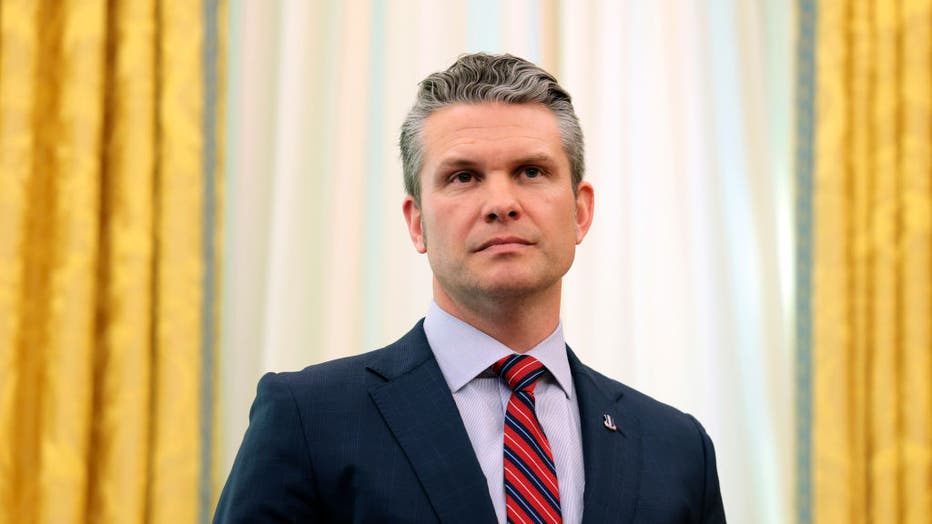Report: Hegseth had an unsecured internet line set up in his Pentagon office
Pentagon watchdog to review Hegseth's use of Signal
The Pentagon's acting Inspector General Steven A. Stebbins announced Thursday he plans to review Defense Secretary Pete Hegseth's use of the Signal messaging app to convey plans for a military strike against the Houthis in Yemen. LiveNOW's Austin Westfall breaks it down with national security analyst Hal Kempfer.
WASHINGTON - New reporting has raised fresh concerns about Defense Secretary Pete Hegseth’s handling of sensitive information after two people familiar with his office setup told the Associated Press that he used an unsecured internet connection—commonly referred to as a "dirty" line—to access the encrypted messaging app Signal on a personal device.
The news follows ongoing scrutiny over Hegseth’s sharing of military strike details in Signal chats, prompting an investigation by the Pentagon’s acting inspector general.
An unsecured line in a sensitive space
The backstory:
According to sources who spoke on condition of anonymity, Hegseth had the unsecured connection installed directly at his desk inside the Pentagon. The line bypassed the Defense Department’s secure systems and linked directly to the public internet—leaving it more vulnerable to hacking and surveillance.
Such lines are sometimes used in other Pentagon offices to monitor blocked websites or external information, but experts warn they lack the protections and oversight required for top-level national security officials.
A senior U.S. official familiar with military network security said a key risk of a "dirty" line is that activity isn’t linked to a DoD IP address—masking the user while also potentially circumventing federal recordkeeping laws.
Signal controversy grows
What they're saying:
The unsecured line was reportedly used by Hegseth to access Signal, an app that has become a flashpoint following revelations that he posted sensitive airstrike details in two separate group chats—one of which included his wife and brother, the other, senior national security officials. Those posts reportedly included classified launch and bomb-drop times.

Secretary of Defense Peter Hegseth listens as U.S. President Donald Trump delivers remarks in the Oval Office of the White House on March 21, 2025 in Washington, DC. (Photo by Anna Moneymaker/Getty Images)
The Pentagon has not denied the line’s existence, but spokesman Sean Parnell said Hegseth "has never used and does not currently use Signal on his government computer." He added that the secretary’s communications systems are classified.
Layered systems exist for secure communication
Why you should care:
The Defense Department uses a tiered system of networks to protect information at varying levels of sensitivity.
These include NIPRNet for sensitive but unclassified data, SIPRNet for classified communications, and JWICS for handling top-secret and compartmentalized intelligence.
- NIPRNet: Handles sensitive but unclassified info with firewall protections.
- SIPRNet: Used for classified communications.
- JWICS: Reserved for top-secret and compartmentalized intel.
Officials are typically required to leave personal devices outside secure areas. In Hegseth’s office, a cabinet is available to store electronics—but sources say he used his personal computer at his desk via the unsecured line.
Investigation underway
What's next:
The House and Senate Armed Services Committees have called for further oversight, and the Defense Department’s inspector general is now reviewing Hegseth’s Signal usage. The controversy comes amid broader concerns over staffing turmoil at the Pentagon, following a wave of firings and resignations.
Despite the backlash, Vice President JD Vance told reporters: "I have 100% confidence in the secretary. I know the president does and, really, the entire team does."
The Source: This article is based on reporting from the Associated Press, including firsthand details from two sources familiar with the matter. This story was reported from Los Angeles.

